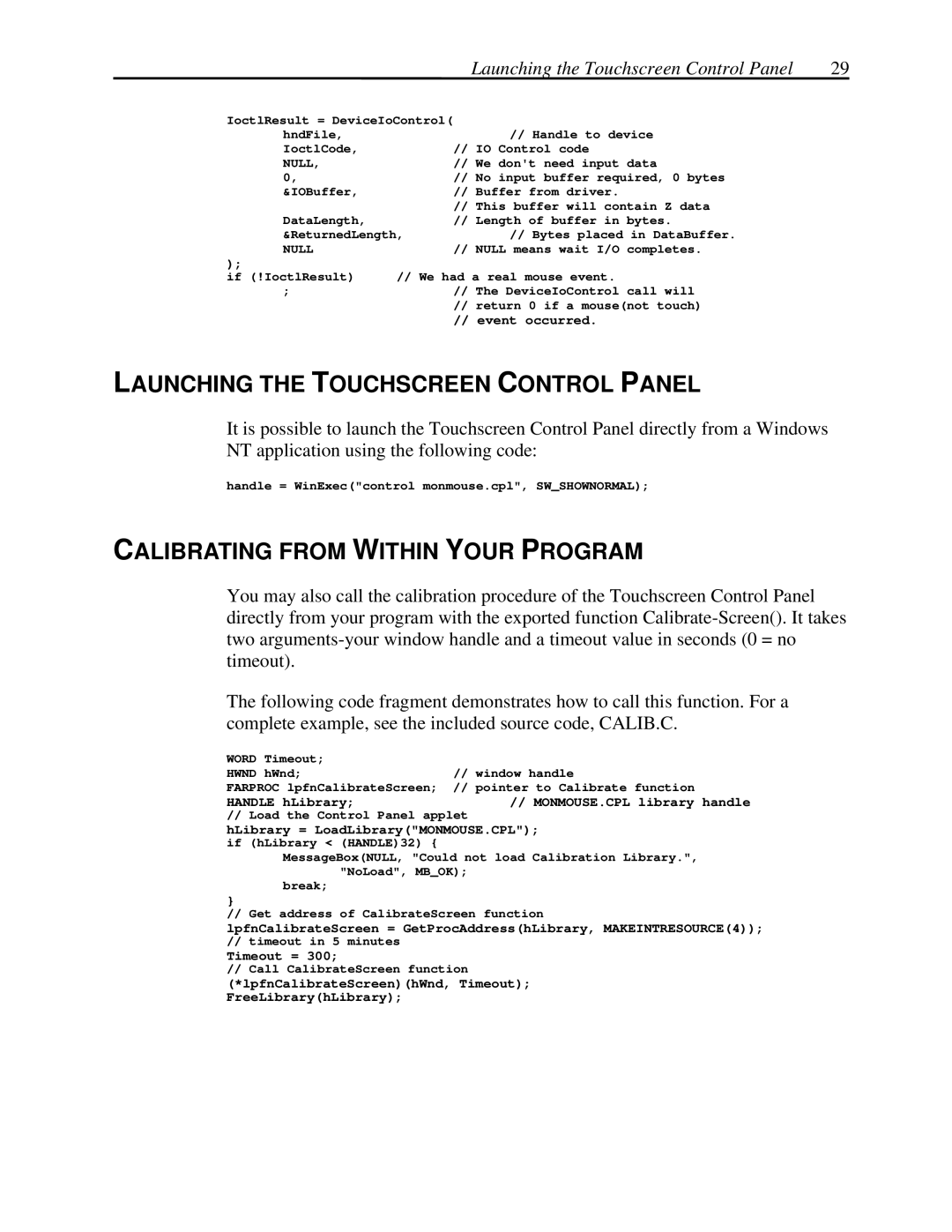Launching the Touchscreen Control Panel | 29 |
IoctlResult = DeviceIoControl(
hndFile, | // Handle to device | |
IoctlCode, | // IO Control code |
|
NULL, | // We don't need input | data |
0, | // No input buffer required, 0 bytes | |
&IOBuffer, | // Buffer from driver. |
|
| // This buffer will contain Z data | |
DataLength, | // Length of buffer in | bytes. |
&ReturnedLength, | // Bytes placed in DataBuffer. | |
NULL | // NULL means wait I/O | completes. |
);
if (!IoctlResult) | // We had a real mouse event. | |
; | // | The DeviceIoControl call will |
| // | return 0 if a mouse(not touch) |
| // event occurred. | |
LAUNCHING THE TOUCHSCREEN CONTROL PANEL
It is possible to launch the Touchscreen Control Panel directly from a Windows NT application using the following code:
handle = WinExec("control monmouse.cpl", SW_SHOWNORMAL);
CALIBRATING FROM WITHIN YOUR PROGRAM
You may also call the calibration procedure of the Touchscreen Control Panel directly from your program with the exported function
The following code fragment demonstrates how to call this function. For a complete example, see the included source code, CALIB.C.
WORD | Timeout; |
|
|
HWND | hWnd; | // | window handle |
FARPROC lpfnCalibrateScreen; | // | pointer to Calibrate function | |
HANDLE hLibrary; |
| // MONMOUSE.CPL library handle | |
//Load the Control Panel applet hLibrary = LoadLibrary("MONMOUSE.CPL"); if (hLibrary < (HANDLE)32) {
MessageBox(NULL, "Could not load Calibration Library.",
"NoLoad", MB_OK);
break;
}
// Get address of CalibrateScreen function
lpfnCalibrateScreen = GetProcAddress(hLibrary, MAKEINTRESOURCE(4));
//timeout in 5 minutes
Timeout = 300;
//Call CalibrateScreen function
(*lpfnCalibrateScreen)(hWnd, Timeout); FreeLibrary(hLibrary);
